Continuation. Part two...
At one o’clock we went from a Spanish Algeciras to Morocco with a ferry. There we had to pay €150 as for 1 car and two persons. The whole crossing went smoothly and on time. When we came on the ferry, we left our car and went upstairs to see Gibraltar. The wind was strong. The crossing took 2 hours and went unnoticed. We were in Africa, and in the first Muslim country I’ve ever visited.
It was about three o’clock p.m. when we landed at the African continent. Passport control was already passed on the ferry. The control by customs still had to happen. We knew in advance that we are not allowed to have alcohol. However we knew that we had in a car. But later on I saw that most of people recognize our Volga as a car, which was always welcome in that country. As a result of such fame, we were asked only either we have a weapon, drugs and drones. There was no other control. The leader guards only smiled and waved hands in a friendly manner and showed us the thumbs up sign. It was a big contrast to what we heard in advance, that Africa is a very dangerous country, with what we saw in reality. Upon arrival, we were able to buy and a new SIM card for our telephones, and exchanged money, and even send money through Western Union if needed. All these things went fast and without any problem.

Morocco was a place of spotted mountains, goats sitting on trees, gnomes walking on the streets and skin turning red because of sunlight. The local policeman also told us that he recognizes our car and that there is a river in Russia with the same name.
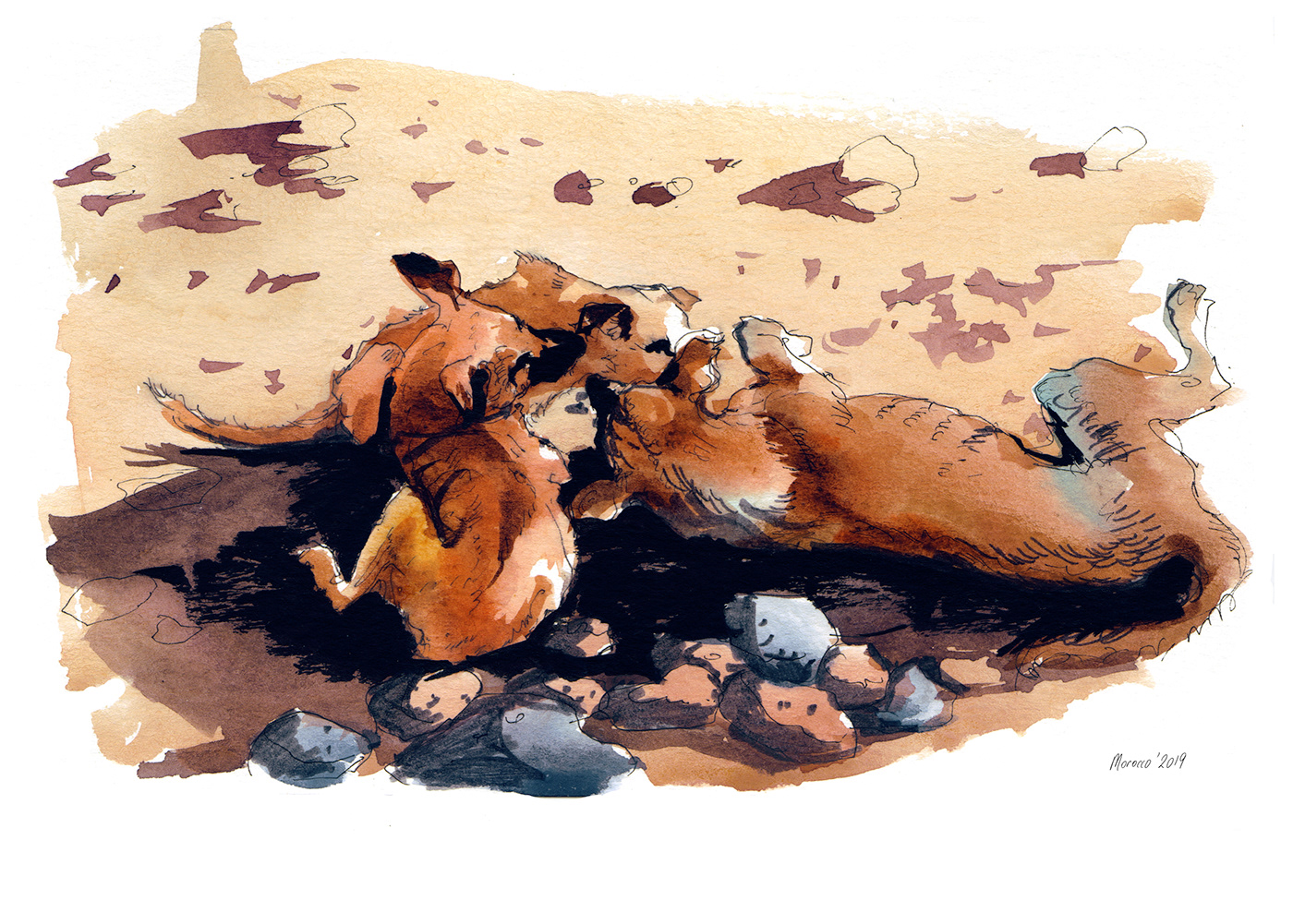
The first thing that caught our eyes after we passed the customs was the mountains. For some reason I expected to see the dunes everywhere, lots of sand, with a little bit of plants and with a lot of elephants and giraffes. But everything was little differently than I thought. The landscape there was the same as in Caucasus, the roads there are windy and steep and everything is green there, with a lot of fog. It was strange for us to watch people, who went the same direction. They were going from the port to the mountains. And they did it not in groups, by one by one.
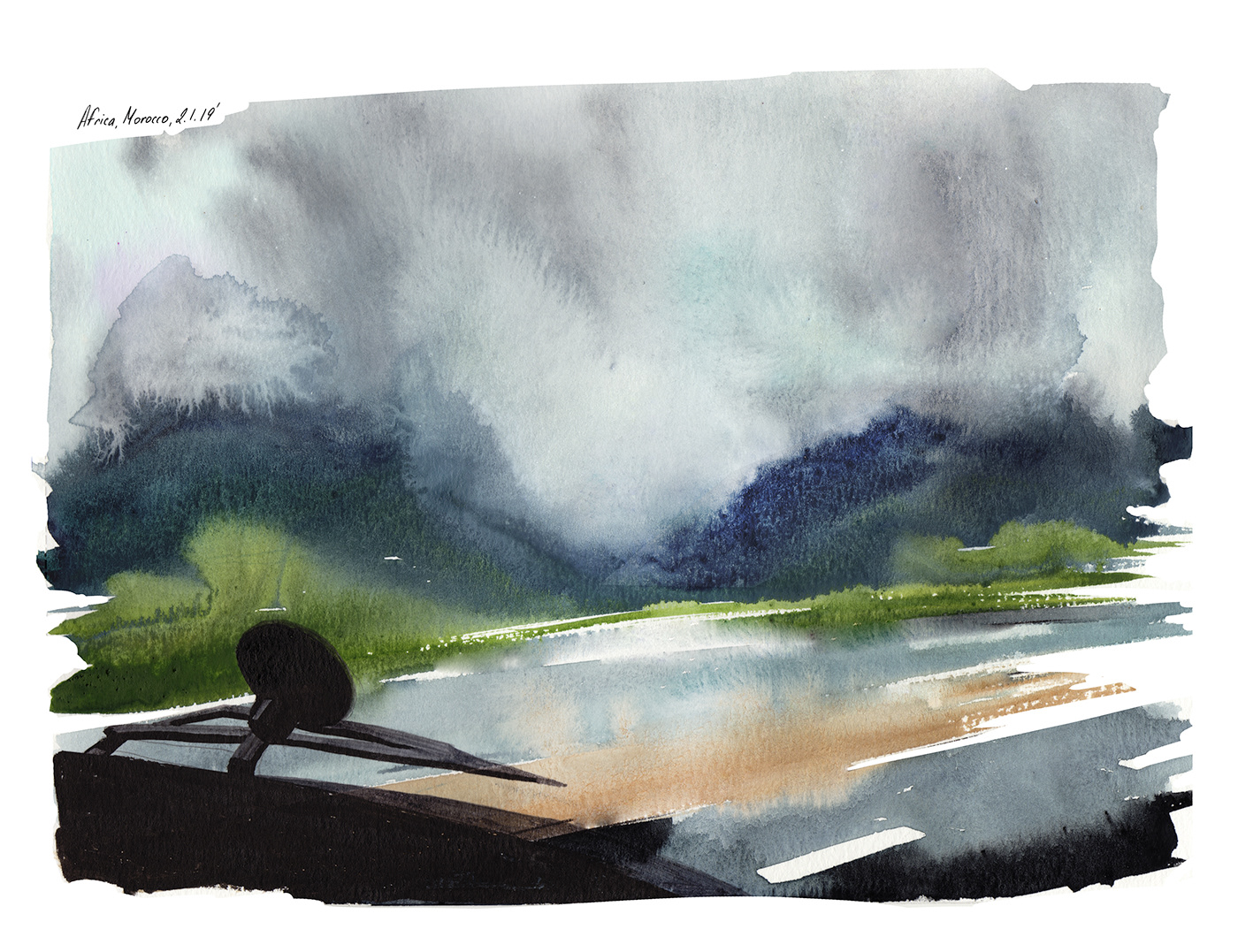
Our first stop was in Tetouan, and not far from this town was a village Mdic, where we rented our house. We were surprised to see the town, when we drove there. All the towns surprised us with how perfectly they were planned. The embankments there were long, with the wrought iron benches which were made in the same style as street lamps. We saw palm trees everywhere, as well as women, who walked with burqas. Our house was guarded, because it belonged to French people, who from time to time rent it to the tourists from Europe. Everything inside that house was of a Moroccan style. The internet was also “Moroccan”, as it didn’t function, as well as the shower. In winter time it was very cold there. They also had air-conditioning, but it only generated a maximum of 22°C. But there were a lot of lamps, carpets, and everything was in patterns. And there was a veranda, where were flowers. In those flowers sat cats, who were eating pasta.


In Tituane we visited Medina. Medina is an old city inside a city. Around ‘Medina’ there was a wall. Only locals lived there. But at the same time it was also a touristic place. Every big city in Morocco has a Medina. One day we visited Carrefour, a French supermarket, where we met a man, who told that us he is a Spanish citizen and he wants to show us the city, because in just these two days in this city will be visited by berbers, the indigenous people of Morocco. Later we heard that it was a classic scam. In hopes that we’ll buy a souvenir there during such an excursion, which this ’Hispanic’ organized for us, he offered us an excursion for free.
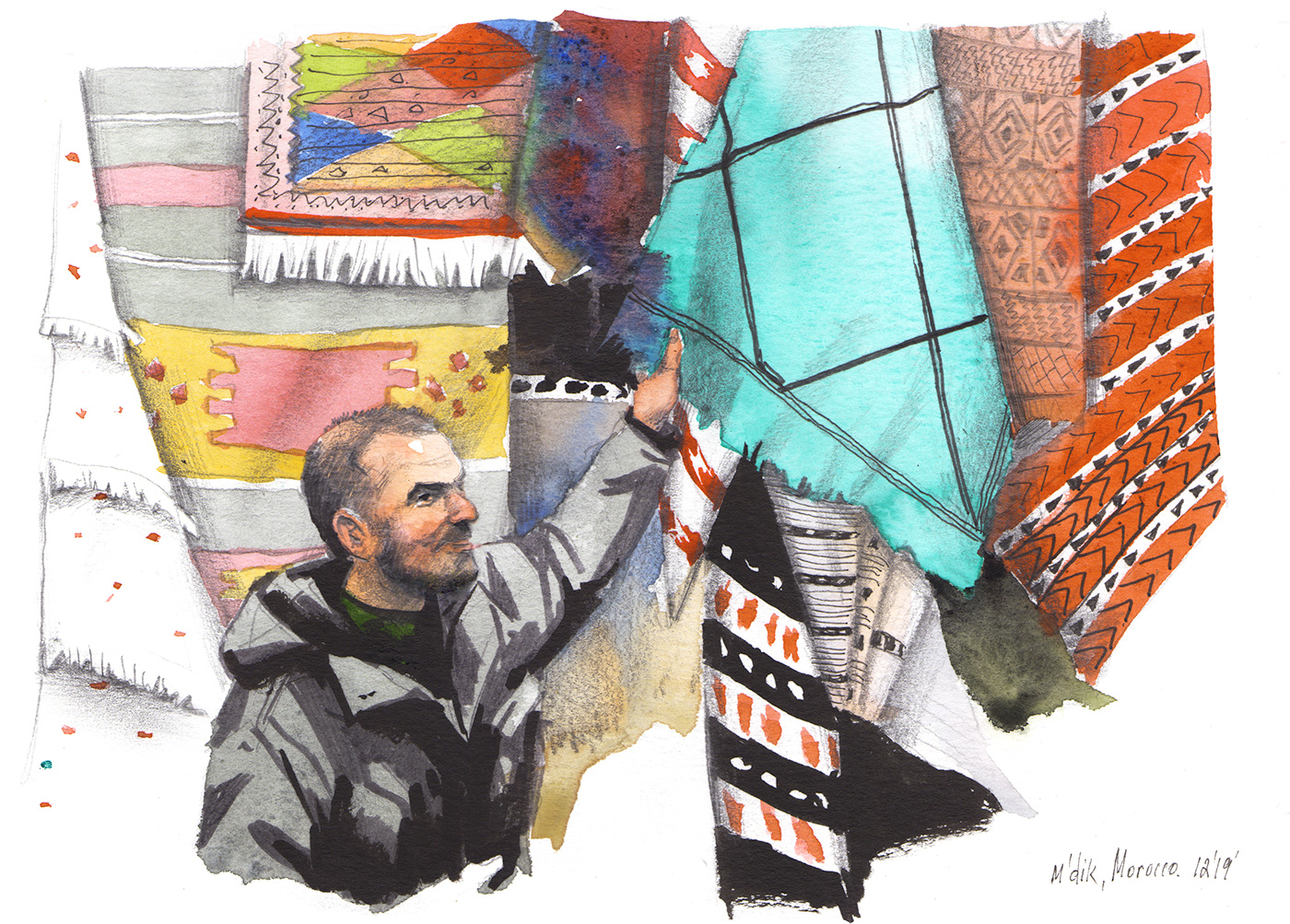
Later on I’ll prescribe this Medina of Marakesh with all the negative details of it. But now on I want speak about Tituane. It was interesting to walk there. We could see different things for us to buy in shops: cupboards, scarves, fabrics, lamps, stones and jewelry, paintings shoes, clothes, ceramics, oils, food with flies, water… At that time I couldn’t even imagine that I’ll ever dare to buy a local cake at a market. A month later, however, our meal was a cake with a processed cheese and the tomatoes with clementines.
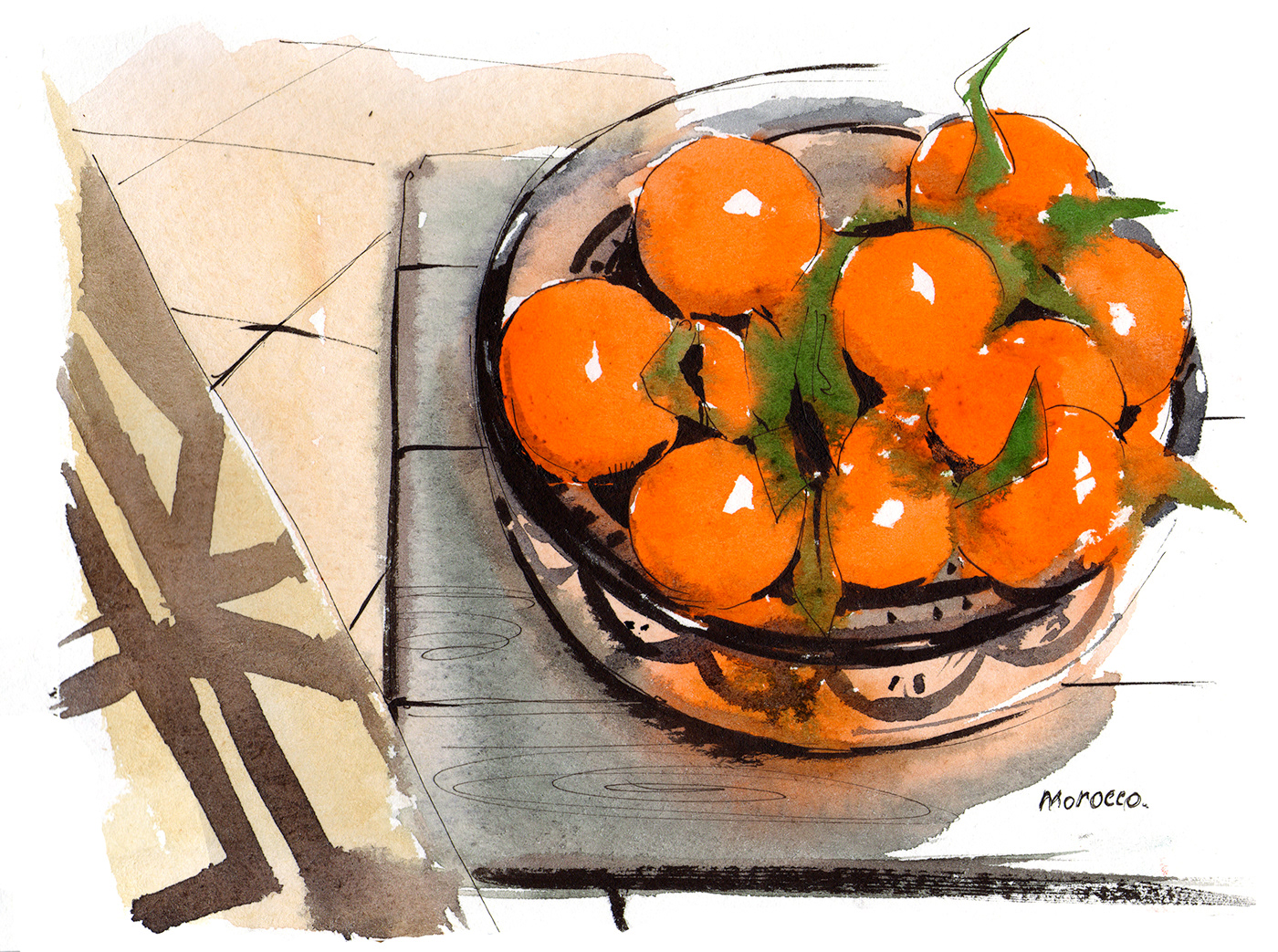
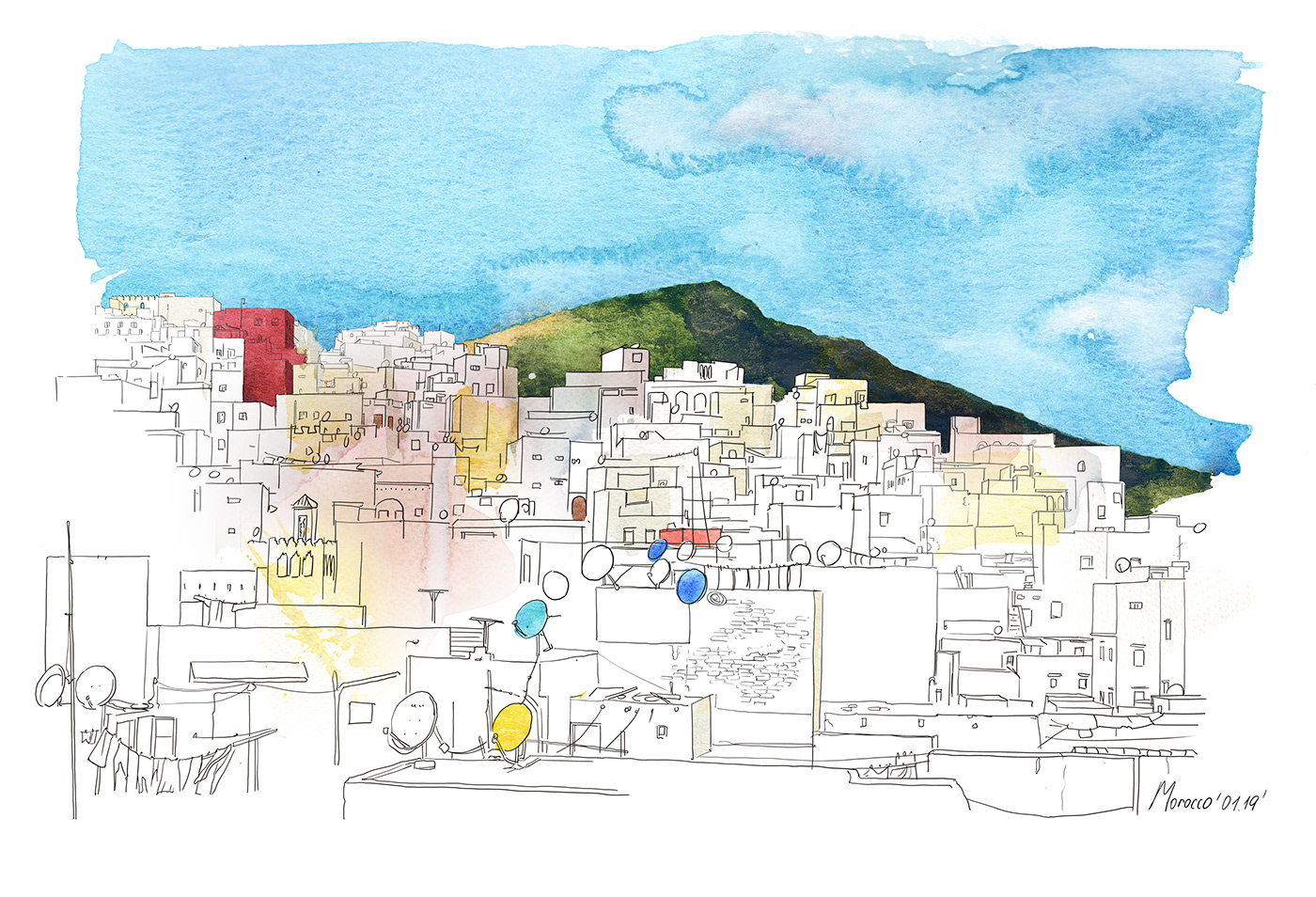
We made the following stop in Rabat, in the central city of Morocco. When we drove into the city, a policeman stopped us and told that us we’ve crossed the middle line on the road, which is forbidden. I thought that it was nonsense and told to Stefan to check our dashboard camera. When this policeman saw our camera, he began to mutter something, using a mixture of Arabic and French words and at the end of his speech called me ‘Madam!’ gave us our papers back and very quickly disappeared. Hello, Rabat.
We rented an apartment on the outskirts of the capital. The owner of it was a fine family. The whole evening we were sitting under a pile of blankets, we chatted in English and ate couscous from plates. Centralized heating doesn’t exist in Morocco (such as in a whole Africa), but at night the temperature drops to 5 degrees. We spoke with Camira, the owner of the house, and her family, where we learned that the minimum pension in Morocco is 600 dollars, that a salary that they get working for some mobile cellphone salon is about 800-900 dollars for herself and for her husband. And that this house, which has 5 floors, is a property of their family.
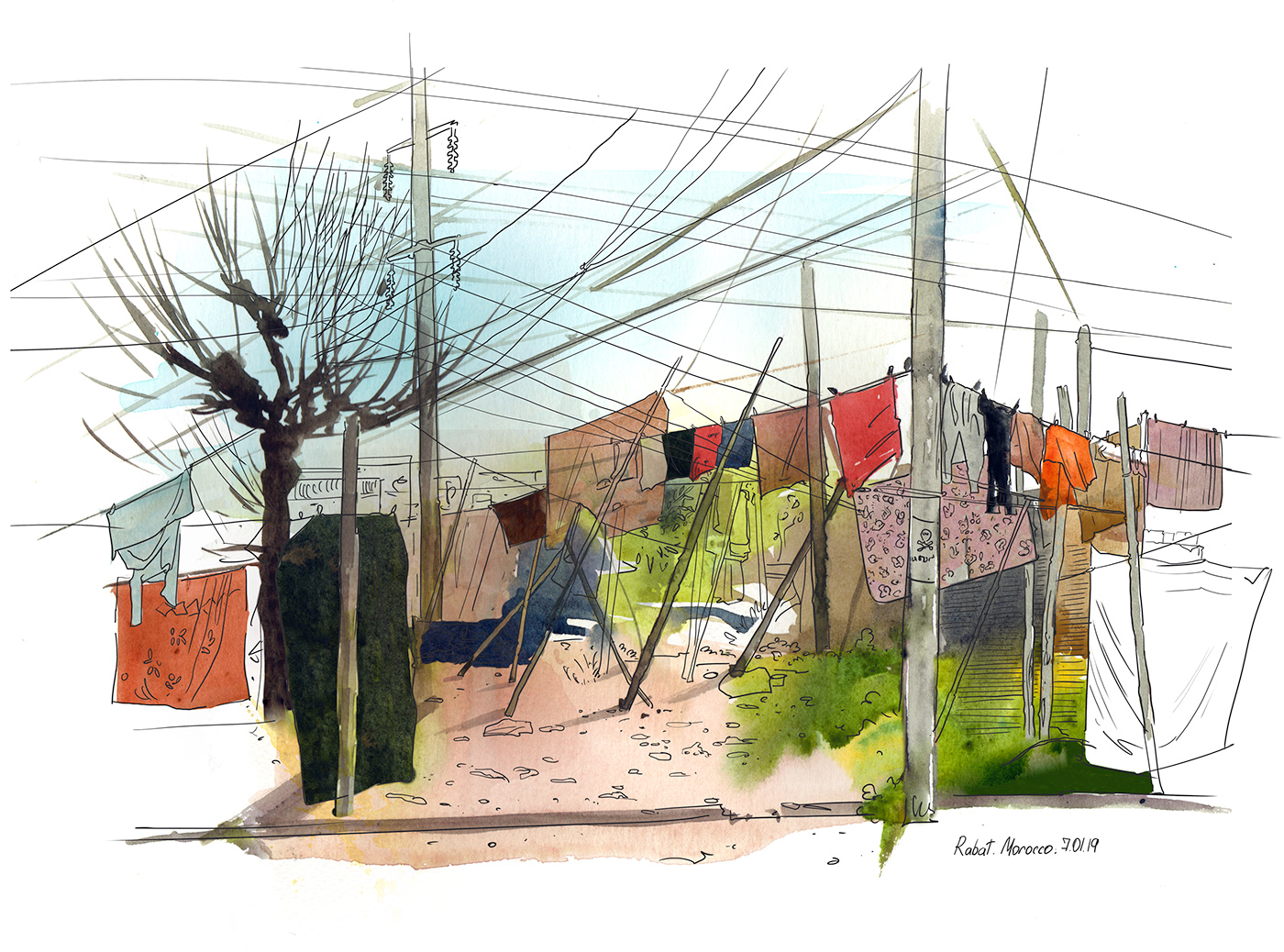
The next day we reached a town Essaouira, where we stayed for 12 days. Because of the low temperature at night our living there was not very pleasant. Already at the first night it was so cold there, that we couldn’t sleep and went outside for to find some wood to burn. However, the fireplace was broken. Later on we found an electric heater in a shop, but the warmth of it could spread in only one direction, while the whole room stayed cold. But during a daytime it was fine overall. It was a typical Moroccan village with crowds of sheep, cows and roosters. The sun shined and the temperature rose to 21 degrees. It was so warm that we could sunbathe. In order to have Internet, we had to use tethering from one of our phones, which we hung up on a stick on the first floor of the building.

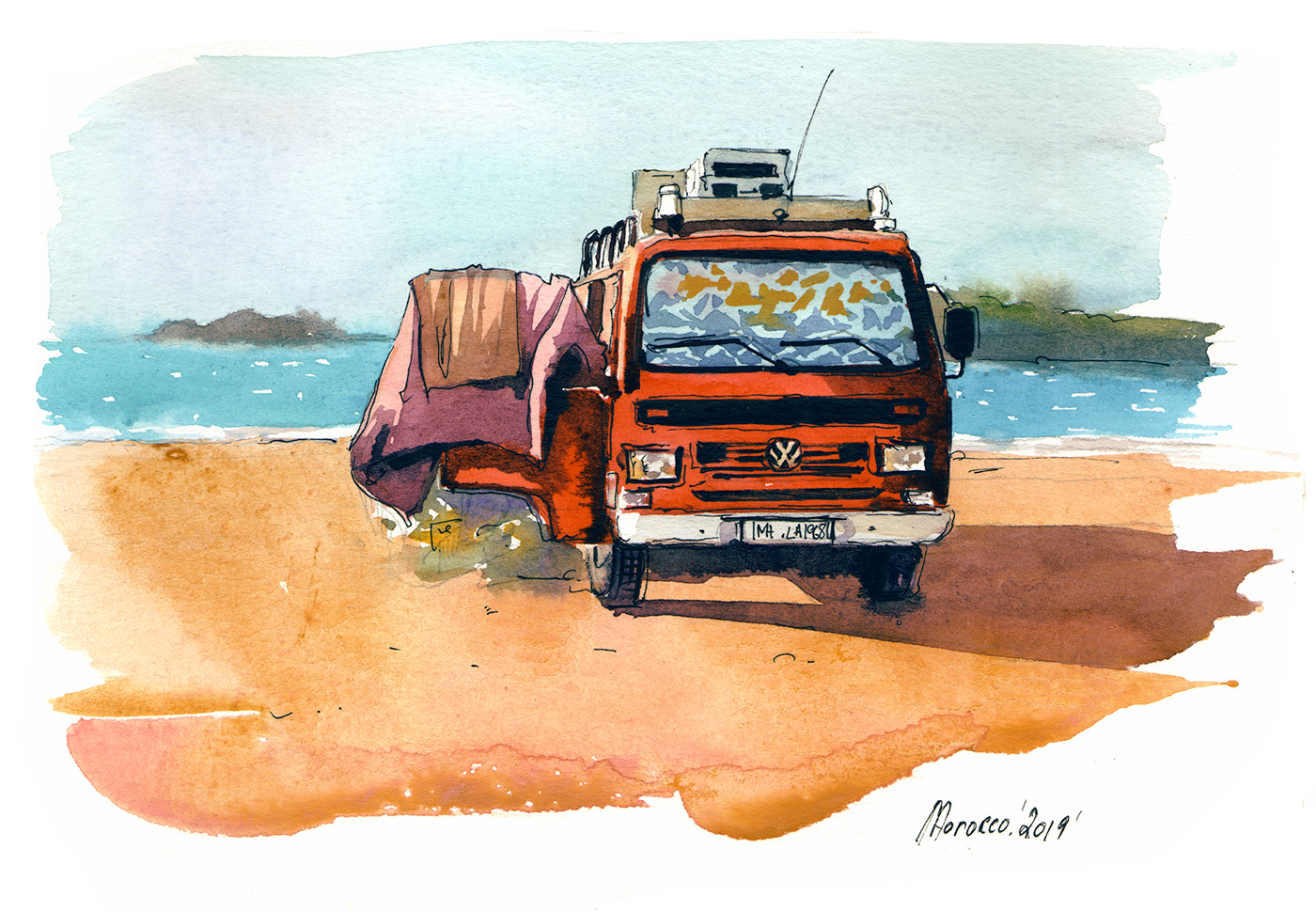
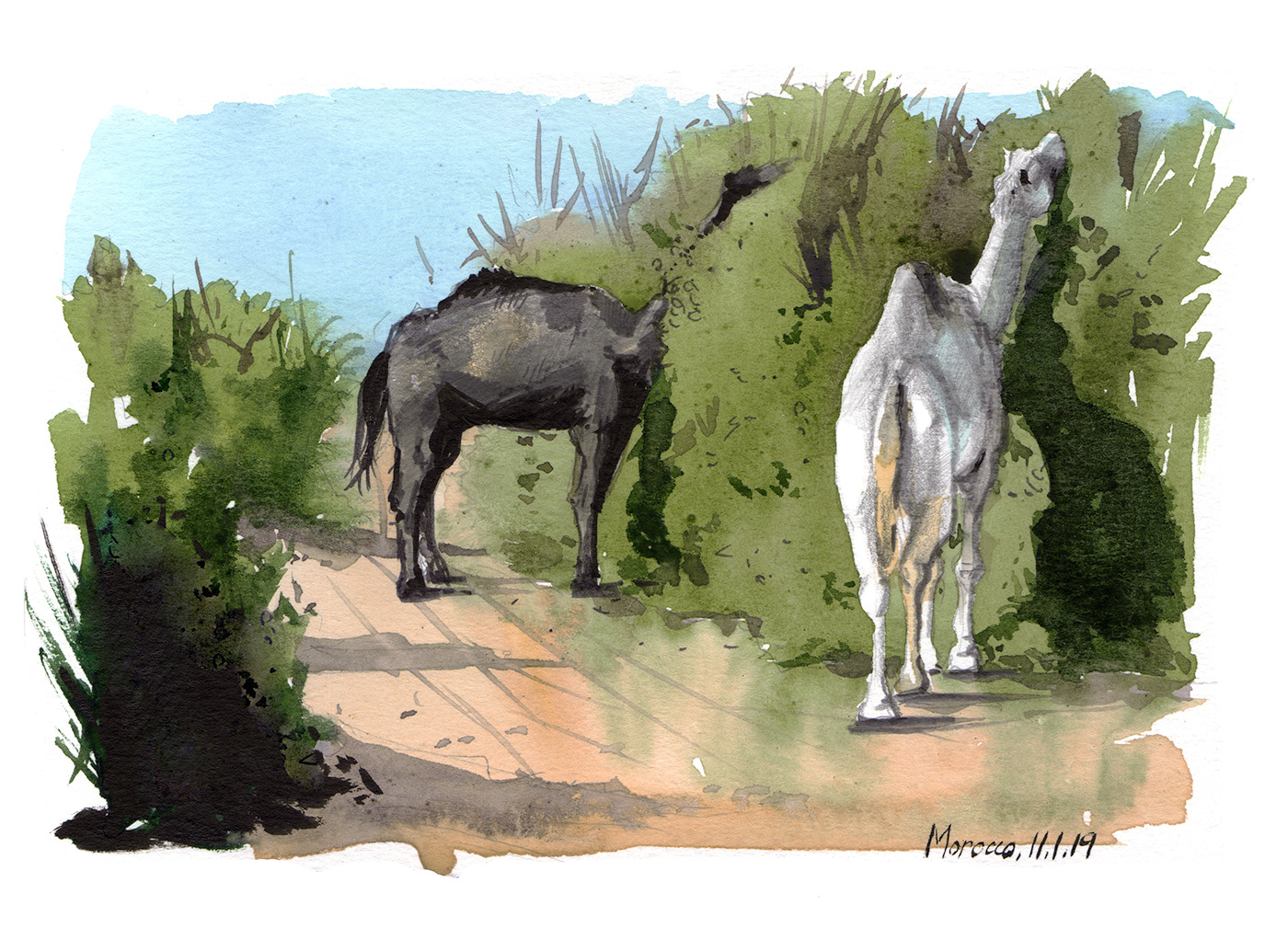
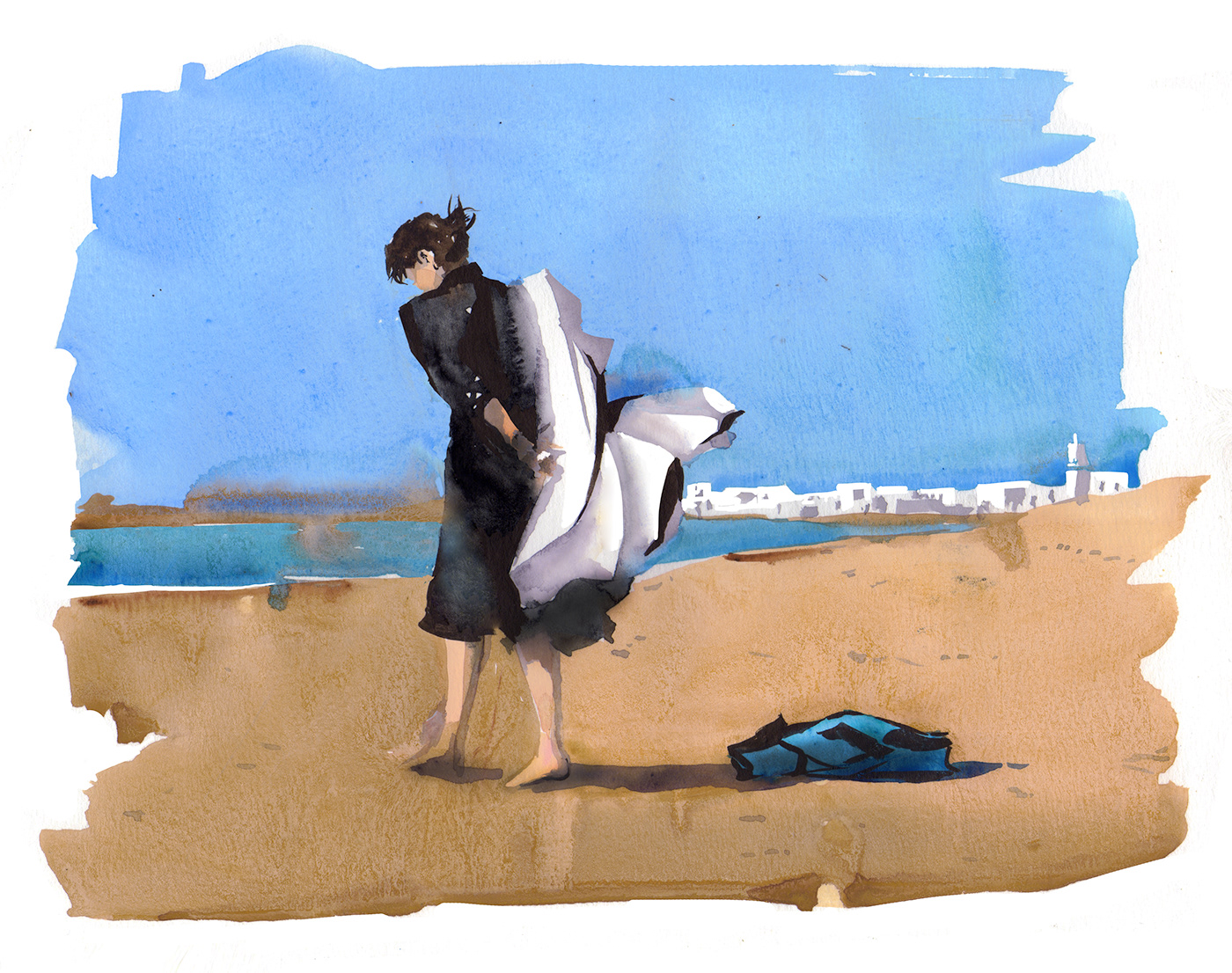
The next place where we came to live to was a town of Agadir, as the southernmost point of Morocco. The way to Agadir itself was interesting, varied and overall very nice. The landscapes changes extremely quickly. When you look outside, you see that steppes flow into the mountains, the mountains change into barkhans, and barkhans end in an ocean, and a way go further and further. The trip didn’t last a long time: we could eat only around 10 clementines. We are not the only ones, who measured the distance by the quantity of the eaten clementines. Because along the way we could see a lot of clementine peels. I could explain this fact for myself: the ground there is very poor and compost is good for the ground. Only if in the past this ‘tradition’ had a sense, now, when we use a lot of plastic, this rubbish is simply rubbish, which you see now everywhere. It seemed that rubbish was one of the distinct features of Morocco.
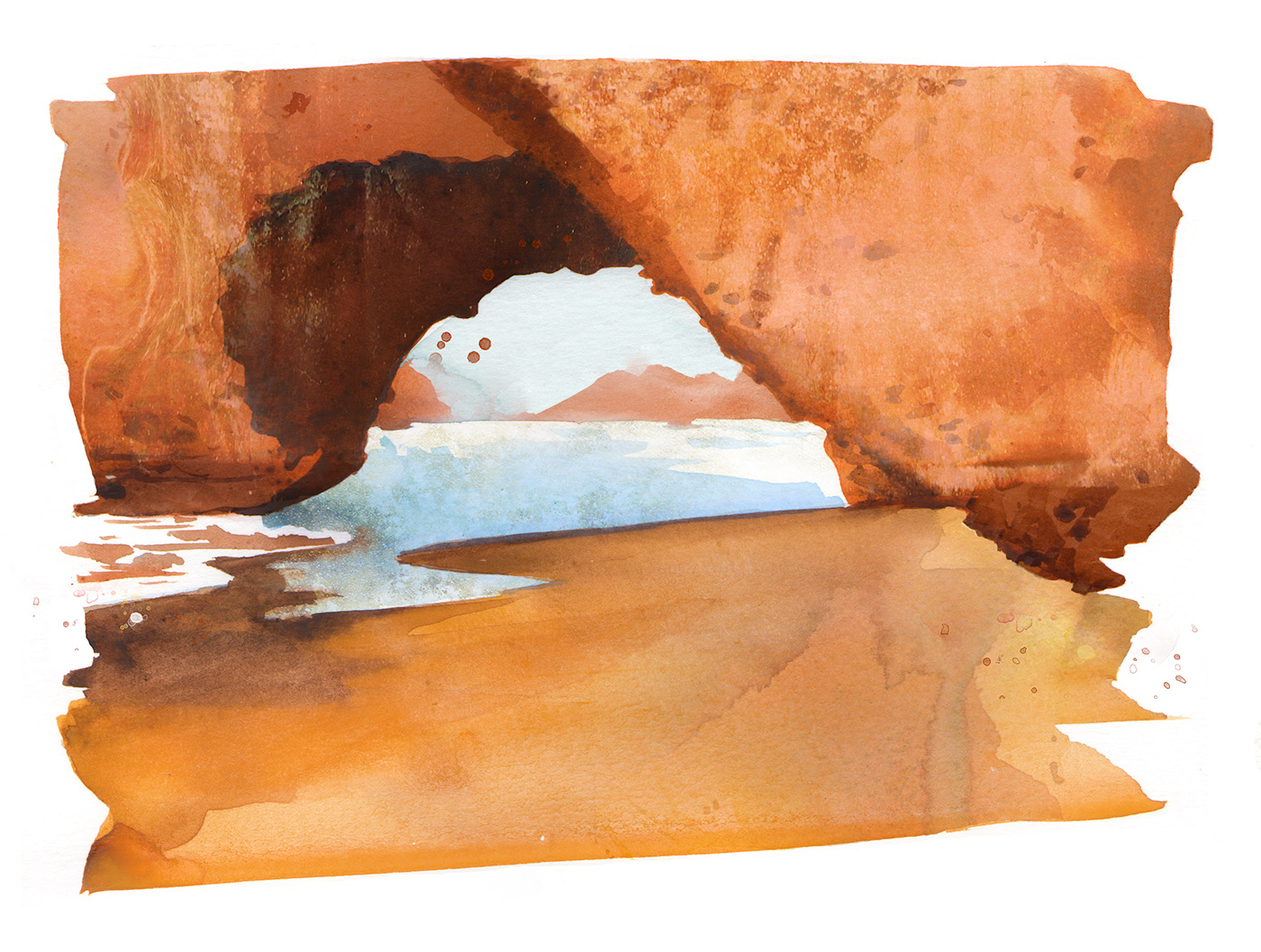


When we came to Agadir, we saw that the apartment there was nice, it was warm there, and there was a lot of sunlight. And there was Internet! I was very happy to discover it. And every morning we heard some berber who sang under our windows and played music.

In the past Morocco was a colony of France. Since that time a lot of French tourists go there, and especially to Agadir. Because the whole coastline if full of hotels, restaurants, the specially equipped beaches.
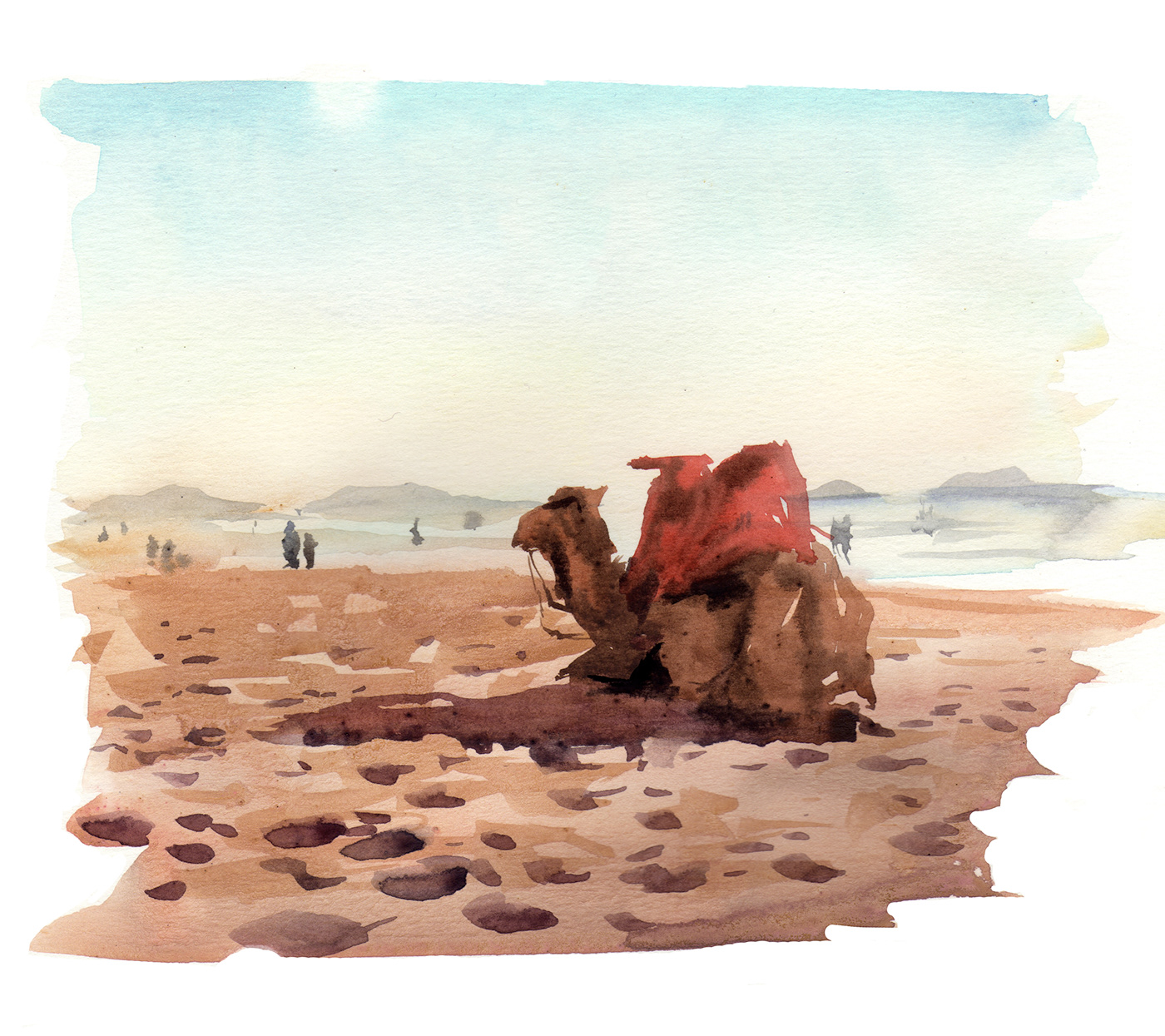
As of the 26th of January, we have started driving in another direction. This time it was the direction to the mountains Atlas, to canyons. To the desert of Sahara.
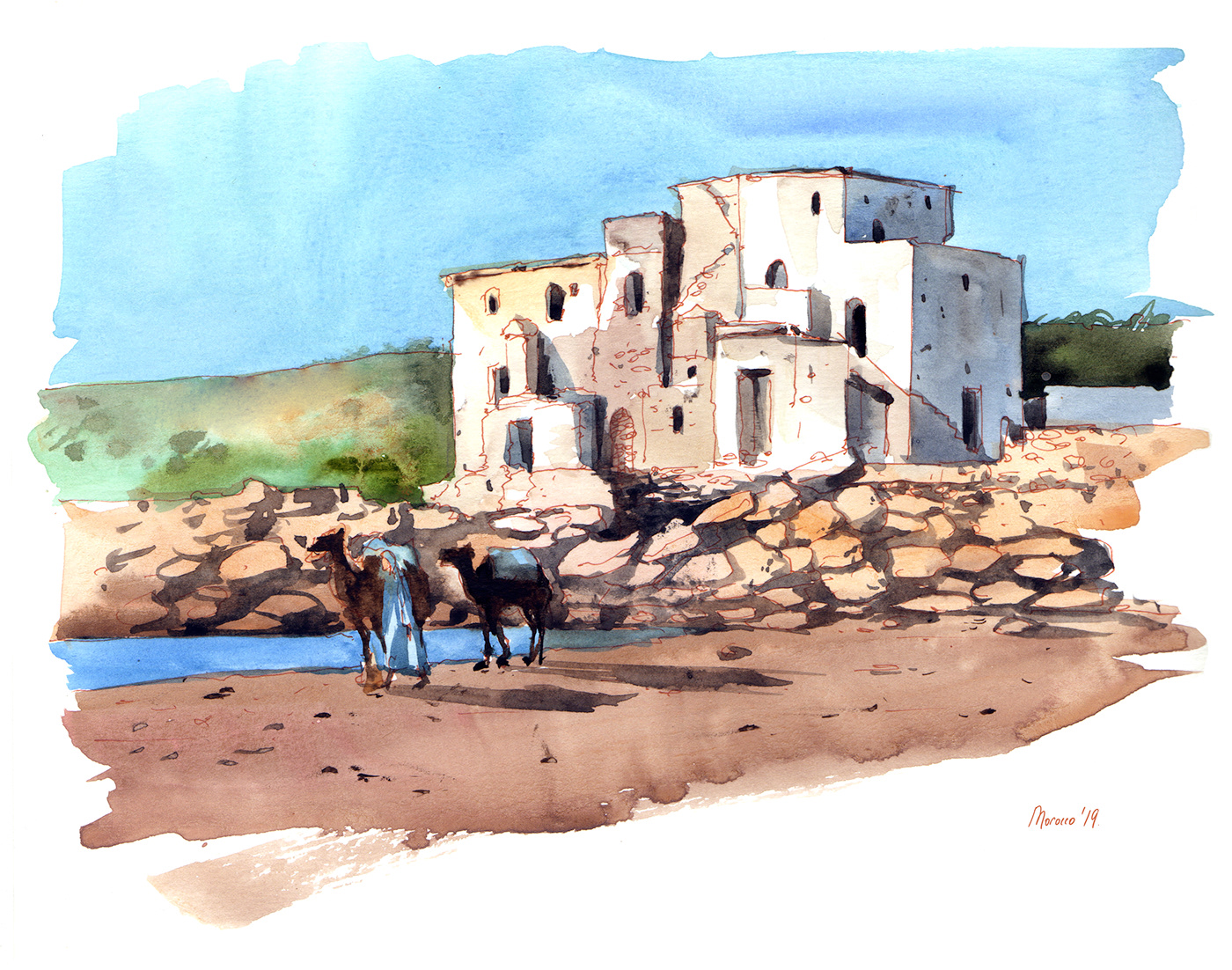
Probably now is the time to tell about Marrakech. I personally expected a lot of this place. When we came there, of course we went to Medina, as a center of the local trade, we went to the market. Now I can say that it was probably a mistake. Because I prefer not to have negative memories. When we were there, the first negative was the amount of the mopeds and the motorbikes. Bikes were everywhere there. They produced a lot of pollution. Streets are narrow and pollution was mixed with a stench of urine and rotten vegetables.

Our journey continued to Ouarzazate, a place where lots of Oscar nominated movies were filmed. The hotel where we stayed saw filming of around 500 movies and the decorations were still there. For example places that appear to be Texas and Colorado in movies were actually filmed in Morocco. The list of movies filmed there was quite impressive. Of course this is done out of budget reasons. Salaries and rent are much cheaper in Morocco than in the States or in France.
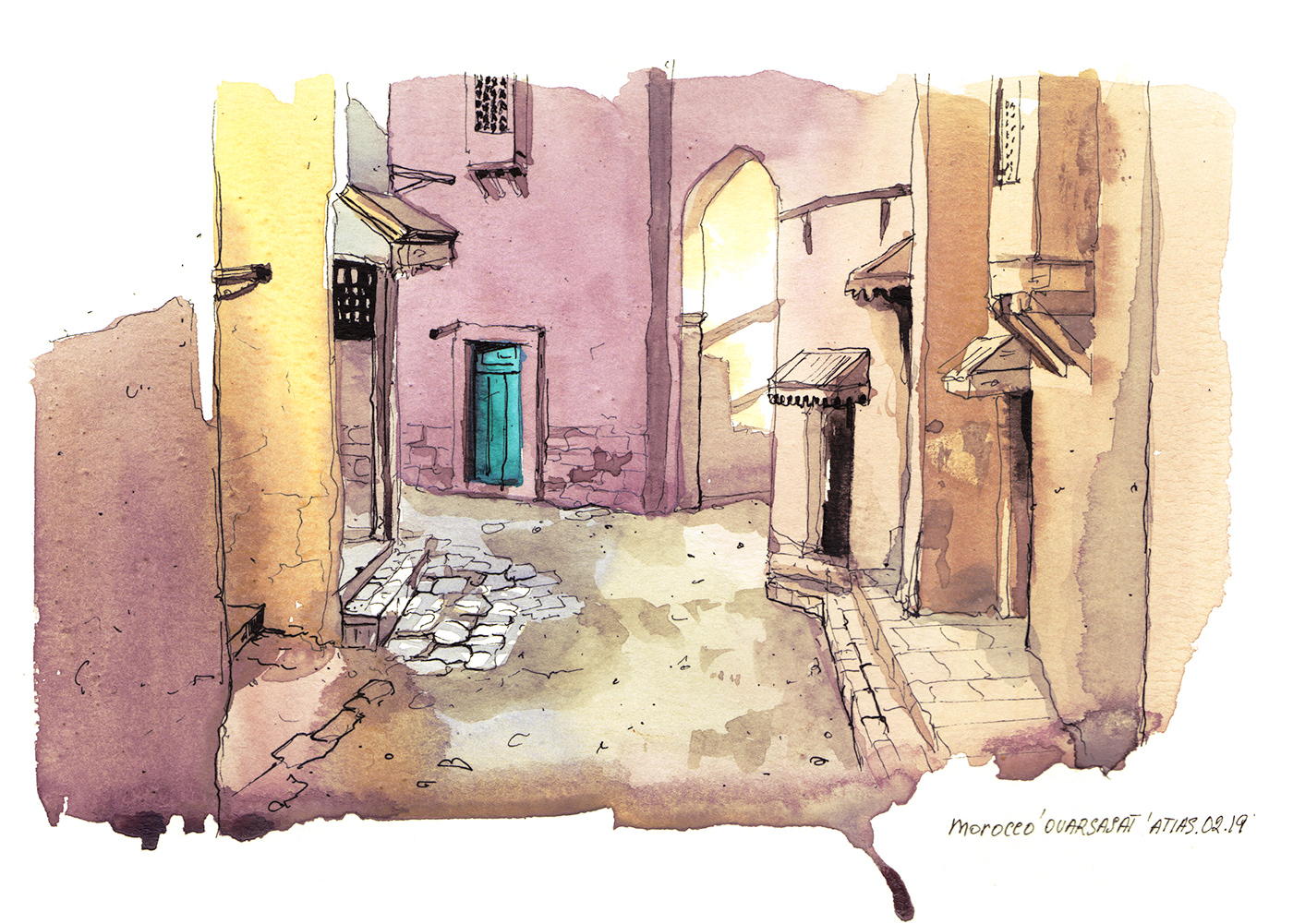
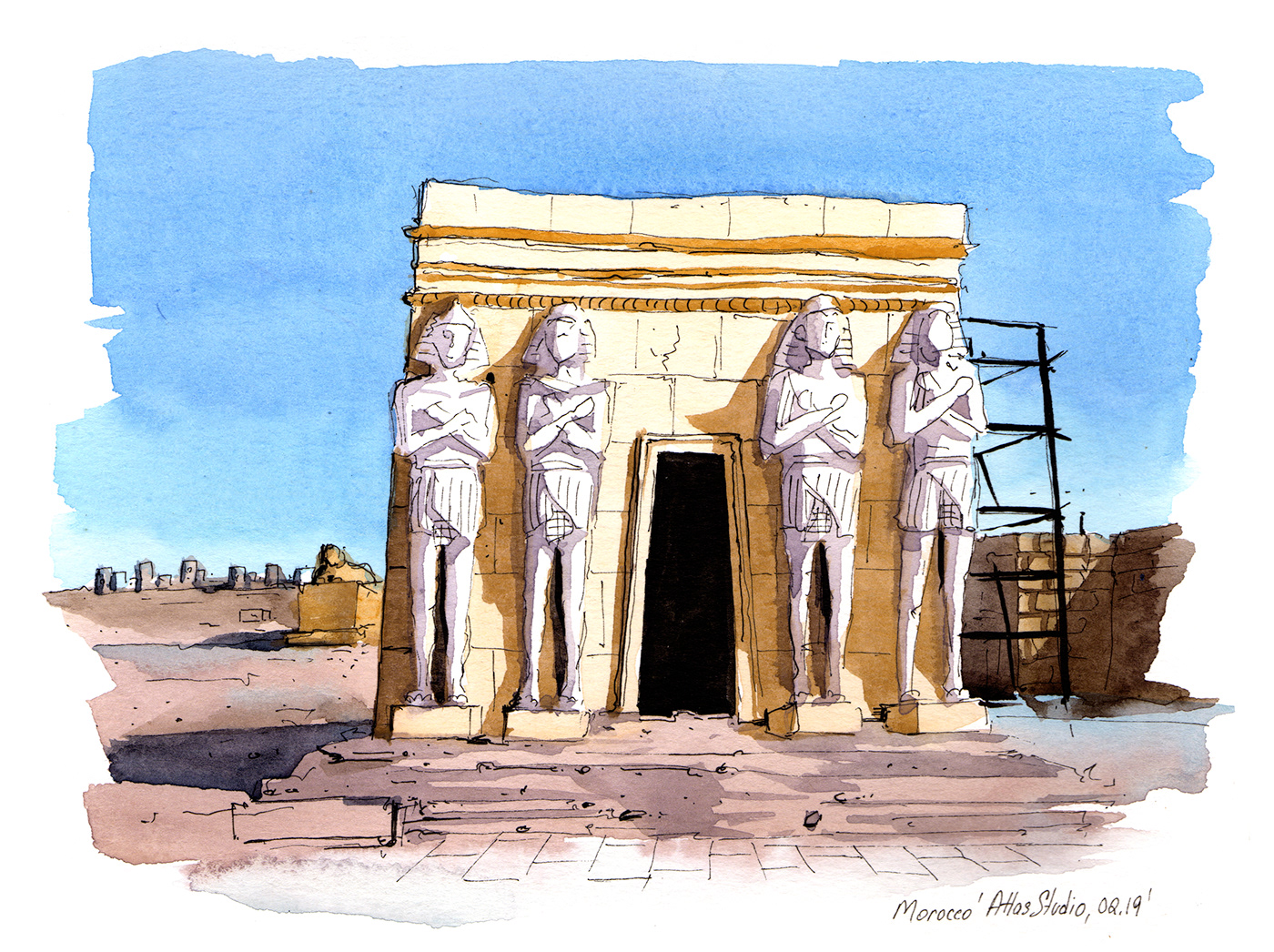
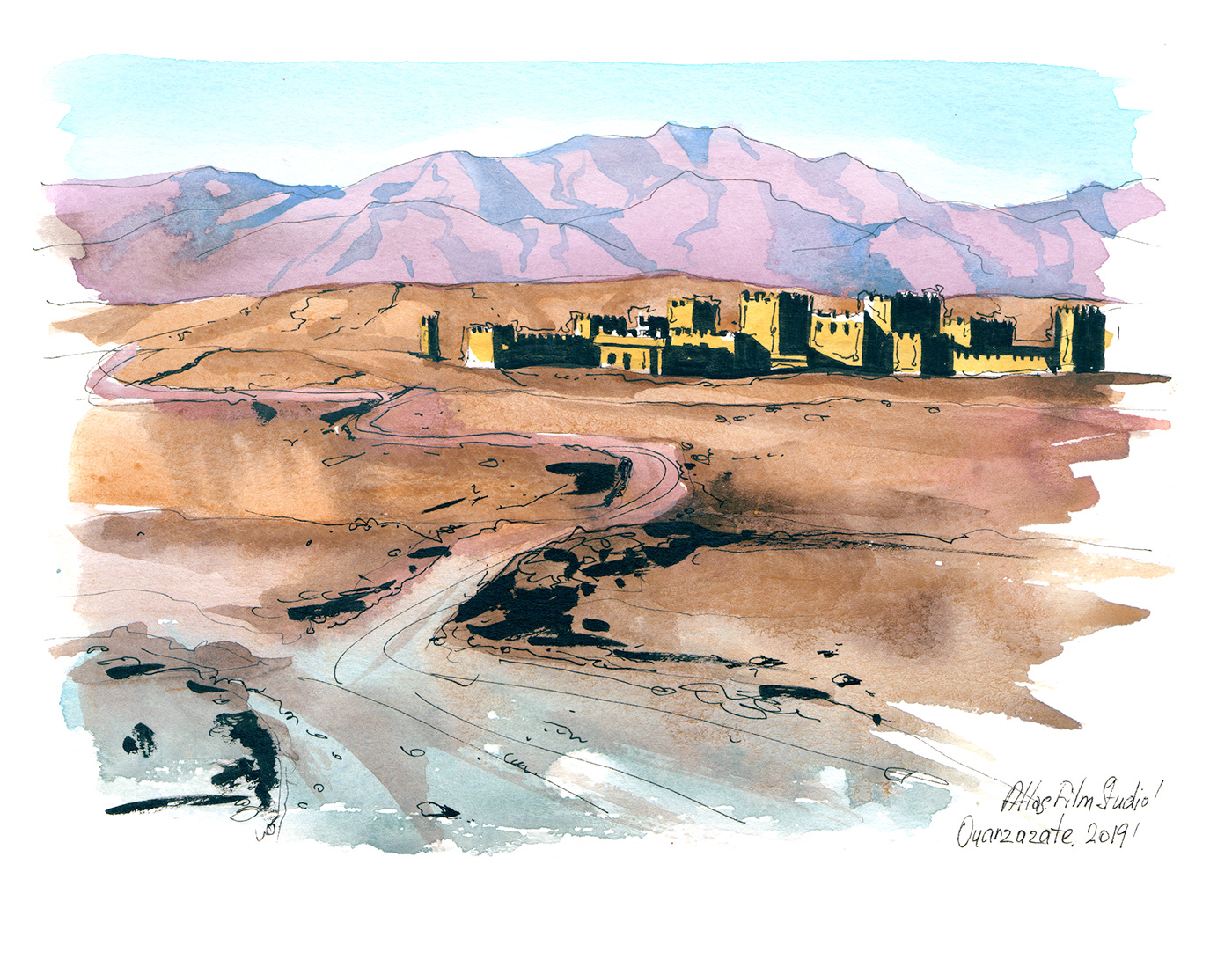

Oscar Hotel by Atlas Studios
After Uarzazat our plan was to go to canyons. But before it we went to live in a house of berber people, the native people of Morocco. They didn’t look like Arab people, have a dark brown color of skin, their noses are broad and their eyes are big. They more look like Negro people of Africa, at least in the way that we think of how the African people have to look like. The Berbers houses have one specific feature. They are built with a garden inside the building. And the widows there were directed not to outside but to the inside part. There aren’t a lot of plants but the area for the garden is pretty large. The illumination comes from the ceiling, which is covered by a transparent tile or glass. This kind of architecture accumulates heat during the day and keeps it for the night. Berbers seemed amazing to us. They were always smiling and happy. Men, women and children. Everyone was greeting us. Everyone is so sincere that it is difficult not to fall in love with.
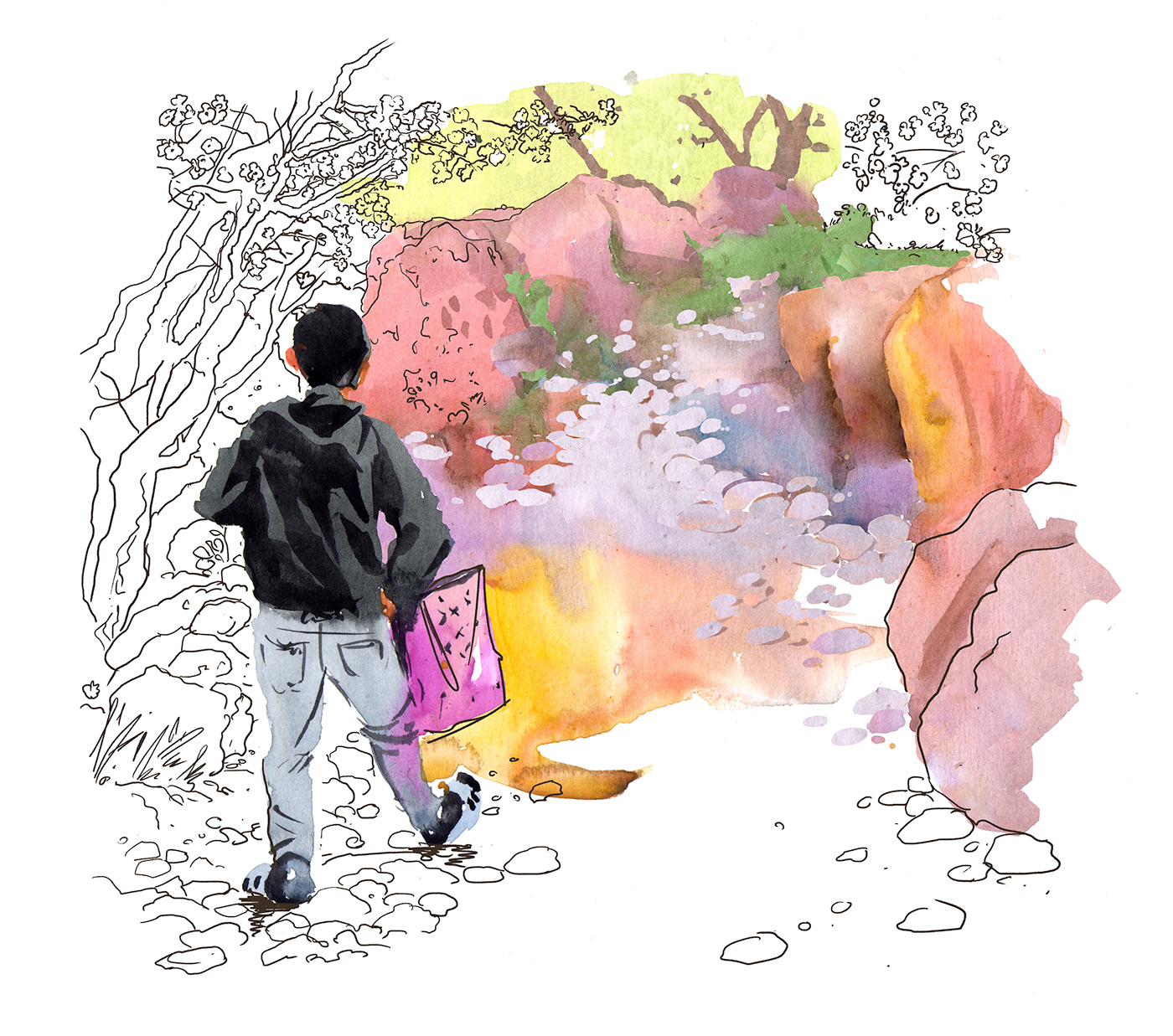
On the next day we went to the canyons. Already on the way there we visited a gas station that was used in the movie “The Hills Have Eyes”. Only for the visit, we had to pay 30 dirhams. A person who received this money was a young Berber. He not only worked there but also lived there at the same time. But he didn’t want take money from us and only later on I understood why he did it. He gave us tea which was made from local grasses and which was traditional there. We exchanged our contacts. Many days, even weeks later, I received messages from him, with a lot of hearts, kisses, flowers. They all were very sweet, with a lot of texts in Arabic. It was nice, but completely unclear. I answered his message, where I strongly requested him not to forget to feed two local dogs, to which we fed all our tortillas.
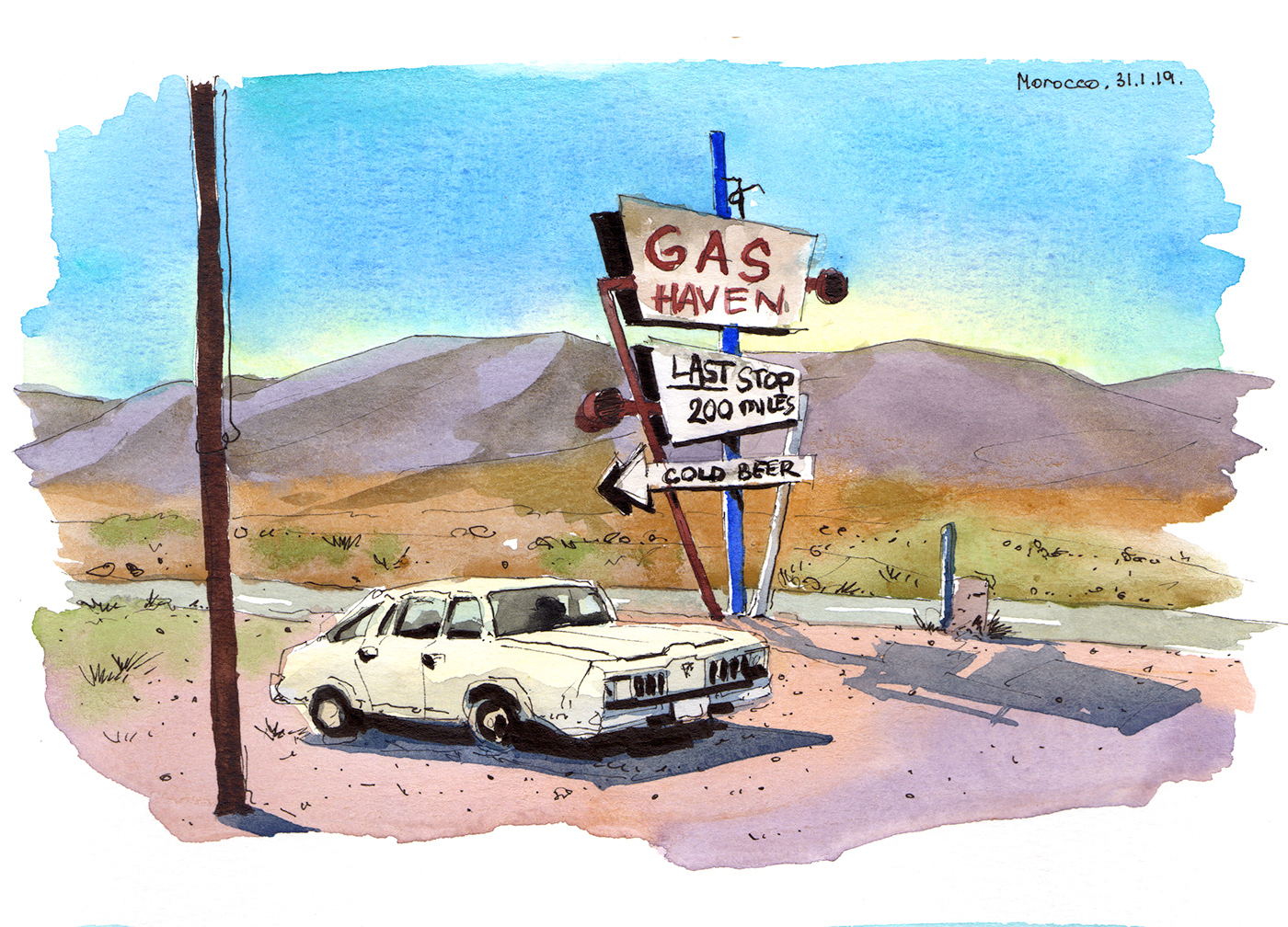
Our penultimate stop happened among the canyons, in a Moroccan house, that belonged to some woman, who was an English painter. When we were there this woman was not at home - she went to US at that moment and the whole house was at our disposal.
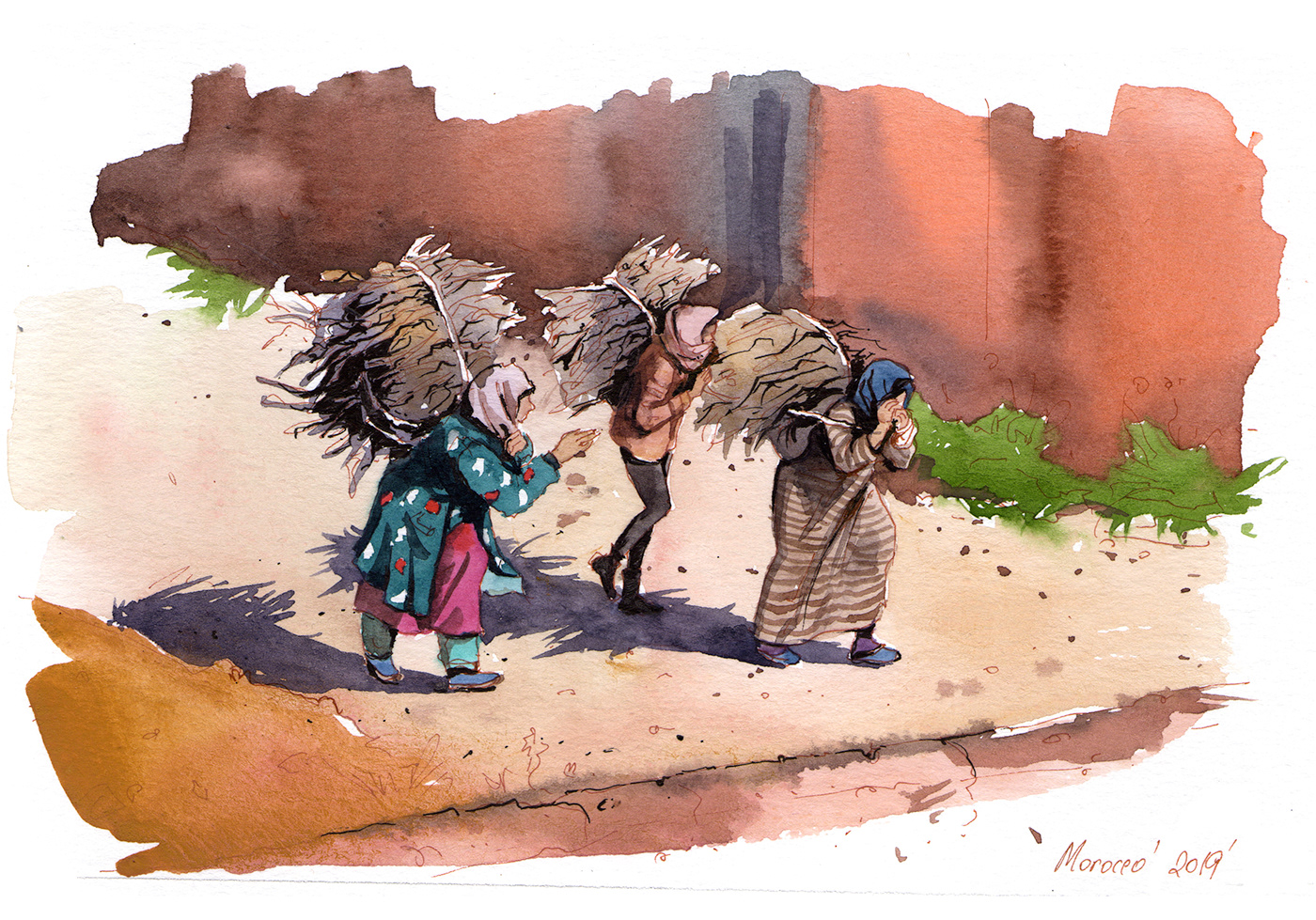
During our travel in canyons we discovered amazing, and very often completely unimaginable sights. For example, we drove through a mountain gorge. There is only one road between the village and the shop. We needed around 3 hours to finish this road by car, it was quite long. So we were questioning ourselves, how do the locals without cars do it? Using donkeys, or by foot? Or they don’t travel there at all? We also saw 5 or 6 houses, which are carved into the rock. There is no electricity, they don’t grow plants, the air is so dry, that we almost cannot breathe. The stones around us had a red-brown color. Bushes are the same. There is a creek, a very small one. Some roads just end abruptly. We were lucky not to have an accident as one of the roads just ended right in front of us. All while people in these tiny houses carved out of rock were smiling and waving at us. They have no internet, not electricity, no connection. How?! It’s amazing how they do it. There’s Paris, New-York, Moscow!
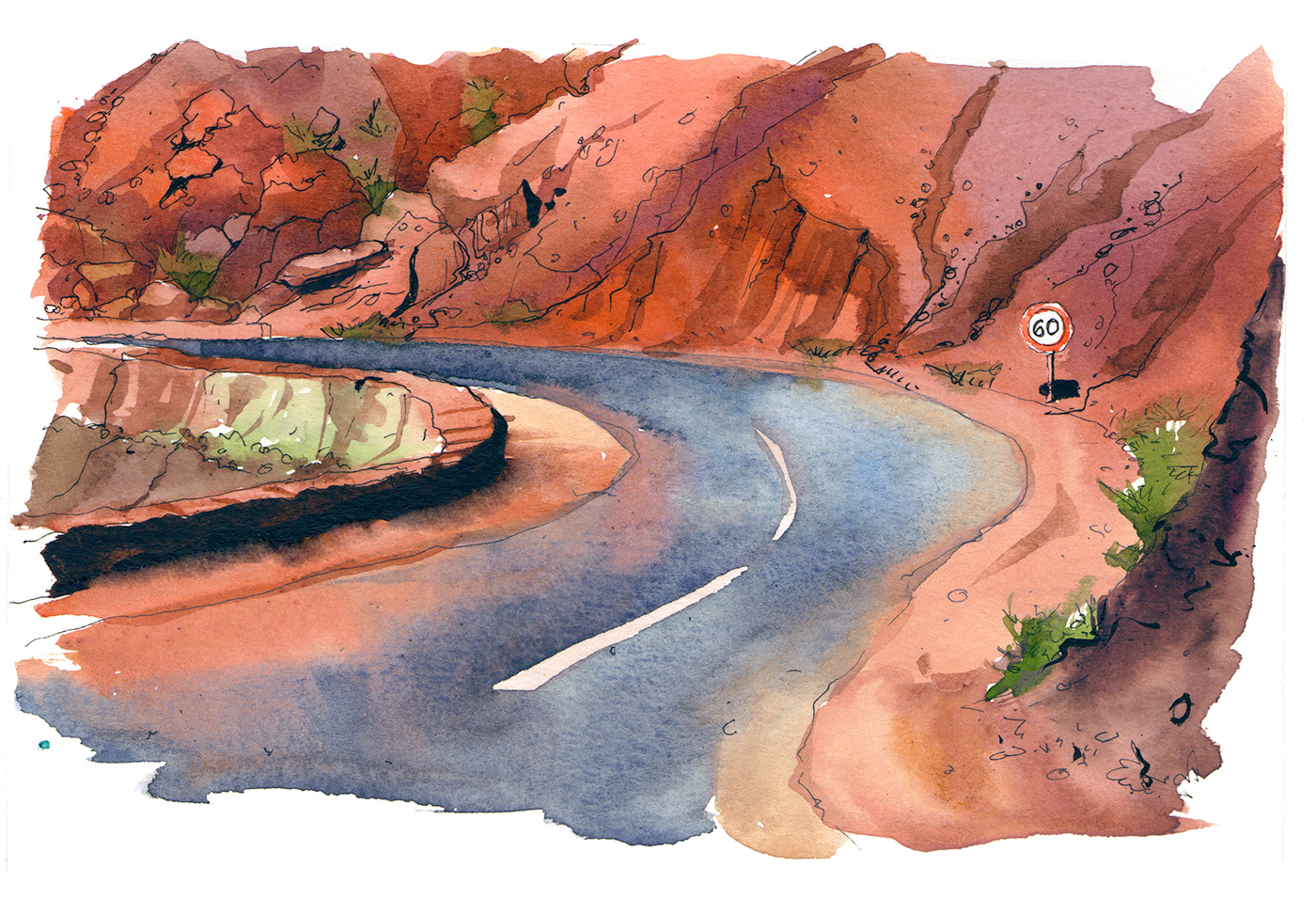
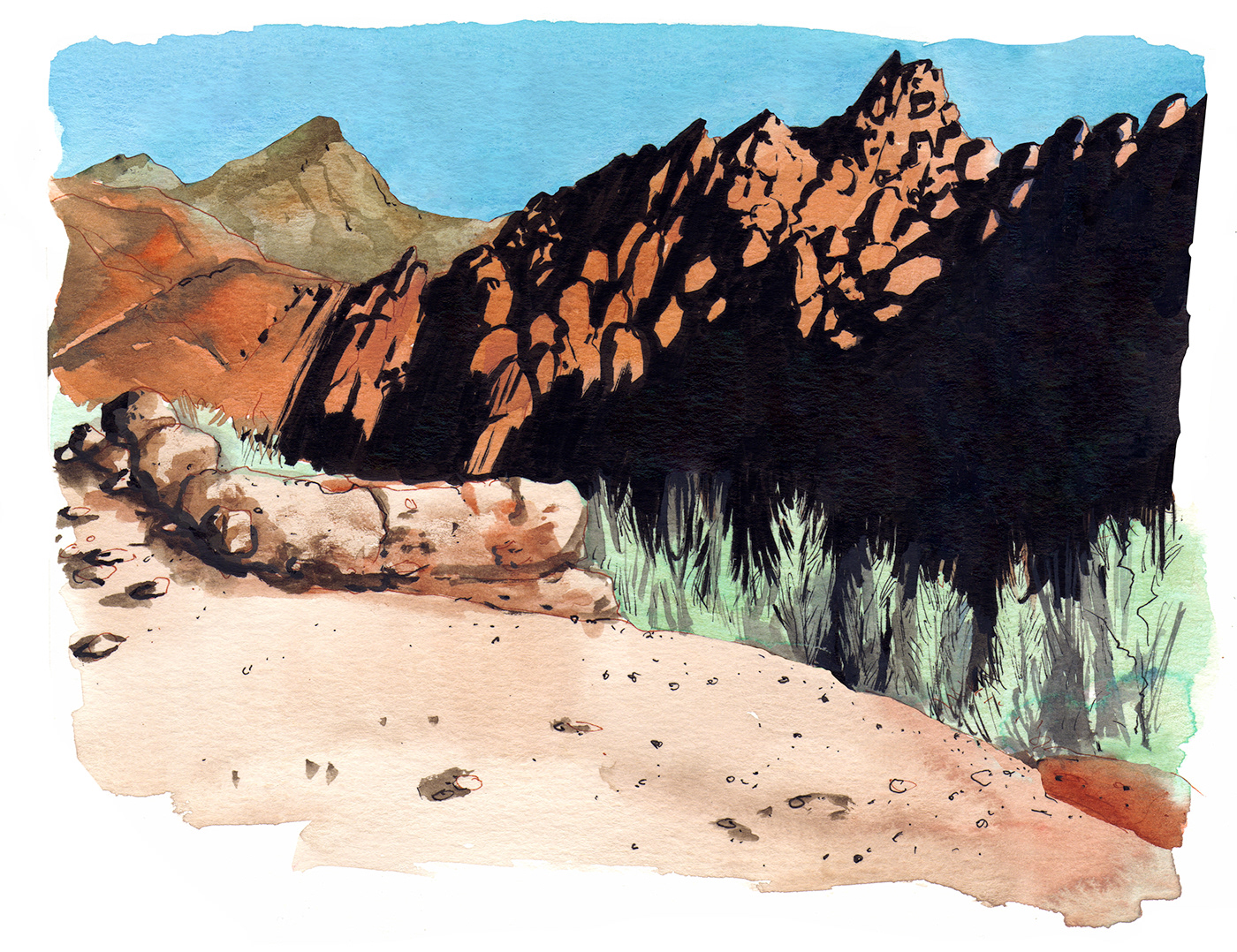
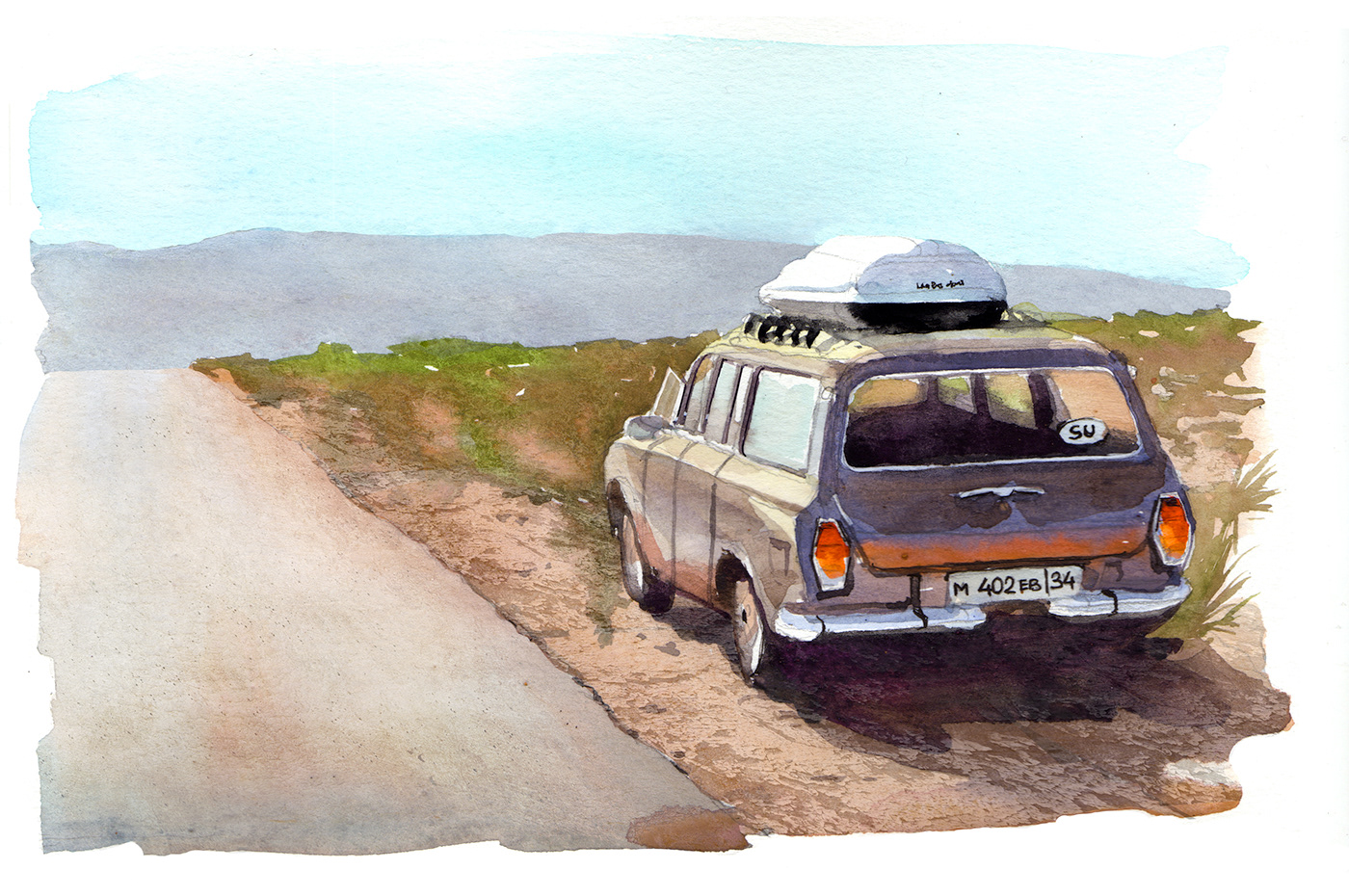
And finally, on the 4th of February we have reached our final goal - Sahara! In my mind I’ve had a picture of a girl in cloth fabric in the desert. And four years later I came into this picture. Explaining what I’ve felt there with words is simply impossible. We didn’t ride camels or Quad bikes. I don’t think that is necessary to experience Sahara. A particularity of this place is that your skin dries out to the point where you feel like you’re 80 years old. Your nose and mouth dry out too, however you don’t really feel the need to drink that much. The sand is incredibly delicate and smooth, like silk. It is very hot under the sun and cold in the shadow. The little scarab beetles left their tracks on the hills of sand, like small tractors.

On the 7th of February we were leaving Africa. The ferry from Nador was leaving at noon. “You a board card” is that two guys in yellow vests told us. We went to figure this point out with guys that looked official, with badges. They told us that they don’t speak English and have no idea what a board card is. Who told you that? The police? Show us.
While Steffan was looking for the board cards, I was approached by the member of passport control, whom I’ve seen only moments ago. In a mix of French and Arabic, he wanted to ask about the duration of our visa. I told him that mine is still active for 3 years. He looked and it was in order. What about your husband? (In Arab countries we have to be married and a simple couple doesn’t count). I tell him its ok for 1 year. He nodded at me and left. With a delay of 40 minutes we have left Africa to return back to Spain.
While Steffan was looking for the board cards, I was approached by the member of passport control, whom I’ve seen only moments ago. In a mix of French and Arabic, he wanted to ask about the duration of our visa. I told him that mine is still active for 3 years. He looked and it was in order. What about your husband? (In Arab countries we have to be married and a simple couple doesn’t count). I tell him its ok for 1 year. He nodded at me and left. With a delay of 40 minutes we have left Africa to return back to Spain.
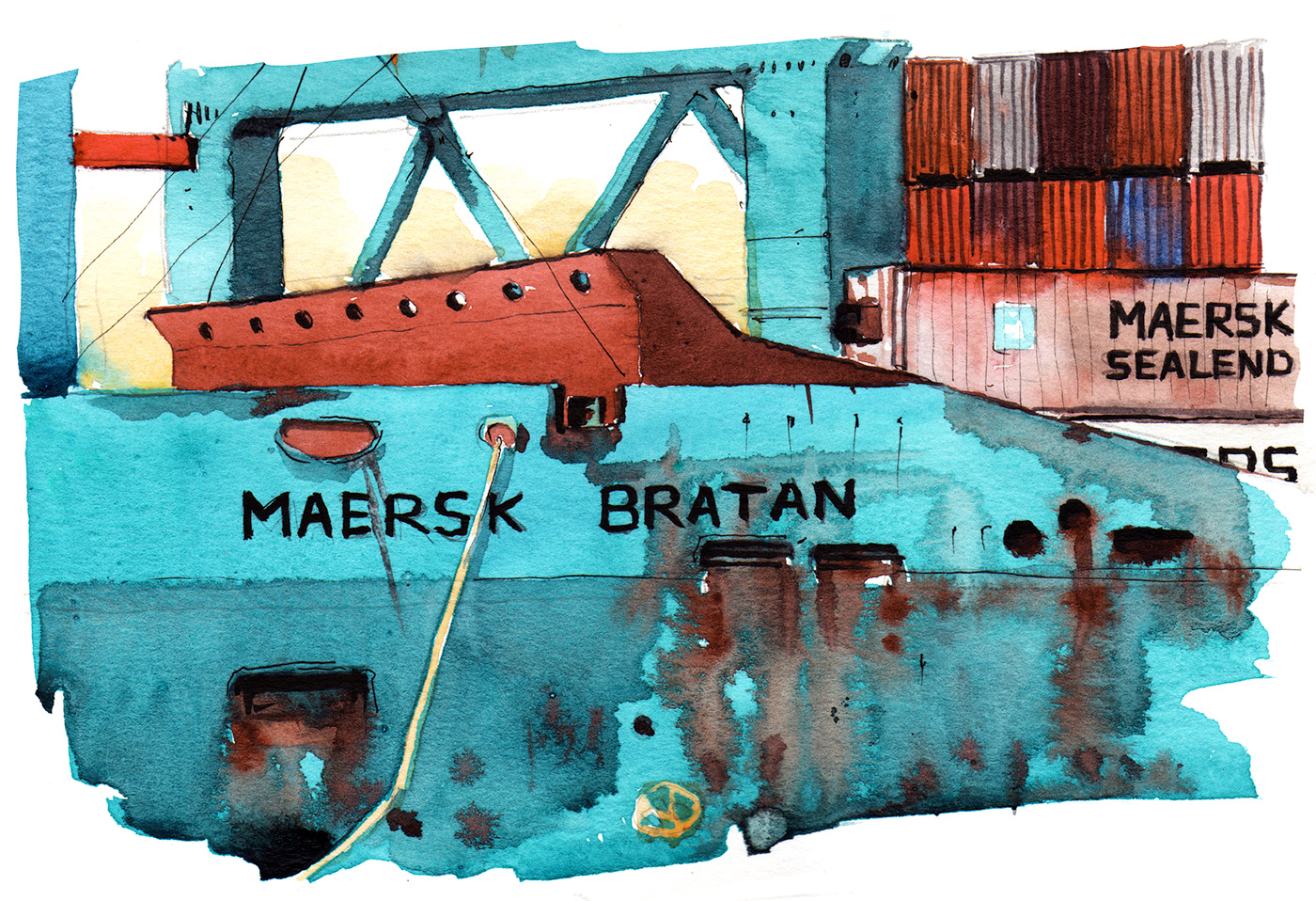
To be continued...




